Géographie et milieu alpin
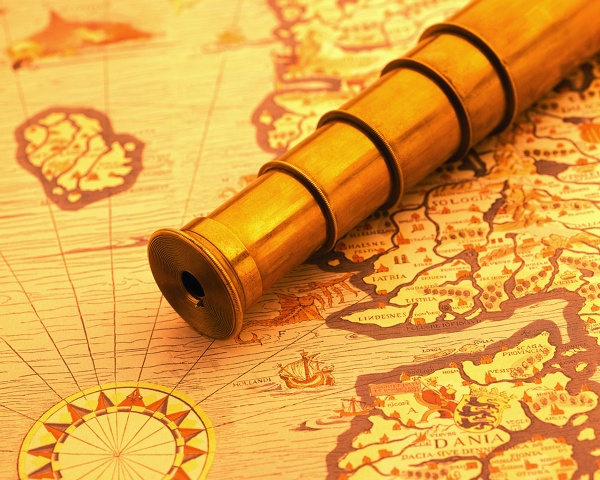
Géographie
Le massif des Alpes est un ensemble montagneux qui s’étend sur 1200 kilomètres, du col d’Altare en Italie, à Vienne en Autriche.
Il est partagé par huit pays : l’Italie, la France, Monaco, la Suisse, l’Autriche, le Liechtenstein, l’Allemagne, et la Slovénie. Sa largeur varie de 130 à 250 km.
Les Alpes peuvent être subdivisées en trois entités: les Alpes occidentales (de la Méditerranée au Valais), les Alpes centrales (entre le Valais et les Grisons), et les Alpes orientales (des Grisons à Vienne).
Ce massif couvre environ 300.000 km² et est peuplé de quelques 13 millions de personnes. Soit une densité de 43 habitants au km². Une densité élevée pour un massif montagneux.
Des informations détaillées sur la géologie, la géographie physique et la géographie humaine des Alpes sont disponibles sous l’article Alpes de l’encyclopédie Larousse.
L’ensemble du relief de la chaîne des Alpes peut être visualisé ci-dessous
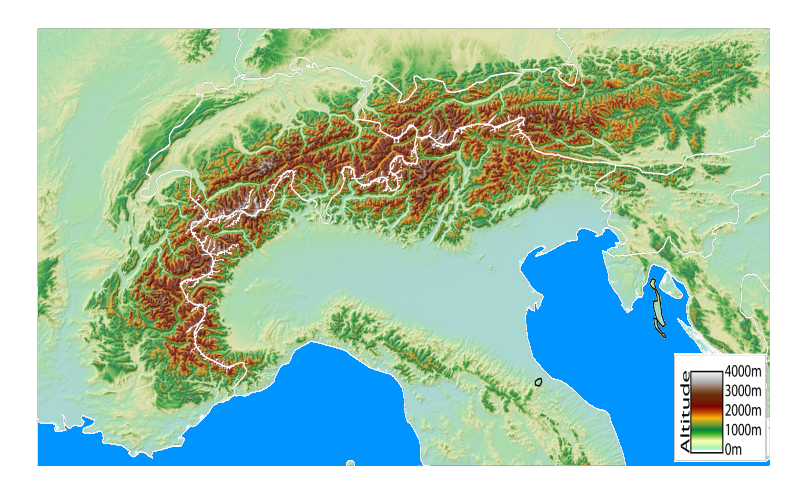
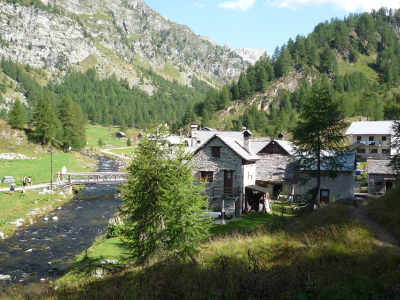
Le milieu alpin
En montagne, la végétation change progressivement selon l’altitude, l’exposition au soleil, et la situation géographique du massif montagneux.
On distingue cinq « étages » ou écosystèmes successifs, avec pour chacun un paysage et une végétation caractéristique.
Les cinq écosystèmes successifs :
- étage collinéen, jusqu’à 800m d’altitude
- étage montagnard, entre 800m et 1400-1700m
- étage subalpin, entre 1400-1700m et 1800-2400m
- étage alpin, entre 1800-2400m et 3000m
- étage nival, au-dessus de 3000m
Davantage d’information sur WikipédiA à la rubrique Flore des Alpes.
En principe, le randonneur ne s’aventure pas au-delà de l’étage alpin. Le montagnard, lui, va monter plus haut et évoluer sur un terrain où prédominent les roches, la neige et la glace. Ces éléments imposent de faire une distinction fondamentale entre différents types de progression.
Nous y reviendrons plus tard lorsque nous aborderons l’étude des différentes techniques de progression.
Toutes les roches ne sont pas propices à la pratique de l’escalade. Il y a toutes celles du géologue, et celles qui font la joie du montagnard.
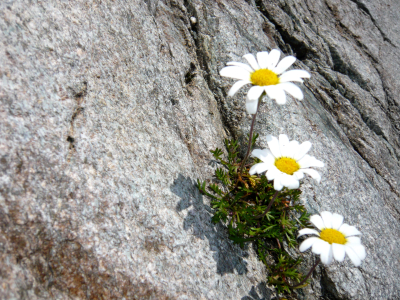
Respect de l’environnement
Le montagnard, respectueux de l’environnement, s’efforcera de préserver le milieu dans lequel il évolue.
Pour l’aider dans cette démarche, le CAS met à disposition un aide-mémoire sur les bonnes pratiques à observer lors des courses en moyenne et haute montagne.
Geography and the Alpine environment

Geography
The Alps are a mountain range stretching 1200 kilometres from the Altare Pass in Italy to Vienna in Austria.
It is shared by eight countries: Italy, France, Monaco, Switzerland, Austria, Liechtenstein, Germany and Slovenia. Its width varies from 130 to 250 km.
The Alps can be divided into three parts: the Western Alps (from the Mediterranean to the Valais), the Central Alps (between the Valais and the Grisons) and the Eastern Alps (from the Grisons to Vienna).
The massif covers some 300,000 km² and is home to some 13 million people. That’s a density of 43 inhabitants per km². A high density for a mountain range.
Detailed information on the geology, physical geography and human geography of the Alps can be found in the Alps article in the Larousse encyclopaedia.
The relief of the Alps can be seen below


The alpine environment
In the mountains, vegetation changes progressively according to altitude, exposure to the sun and the geographical location of the mountain range.
There are five successive « levels » or ecosystems, each with its own landscape and characteristic vegetation.
The five successive ecosystems :
1) hilly zone, up to 800m altitude
2) montane level, between 800m and 1400-1700m
3) subalpine level, between 1400-1700m and 1800-2400m
4) alpine stage, between 1800-2400m and 3000m
5) nival stage, above 3000m
More information on WikipédiA under Alpine flora.
In principle, hikers do not venture beyond the Alpine level. A mountaineer, on the other hand, will climb higher and move through terrain dominated by rock, snow and ice. These factors require a fundamental distinction to be made between different types of progression.
We’ll come back to this later when we look at the different progression techniques.
Not all rocks are suitable for climbing. There are all the geologists’ rocks, and all the rocks that delight mountain climbers.

Respecting the environment
Mountain climbers are respectful of the environment and will do their utmost to preserve it.
To help them do this, the SAC has produced a checklist of good practice to be observed during medium- and high-mountain tours.
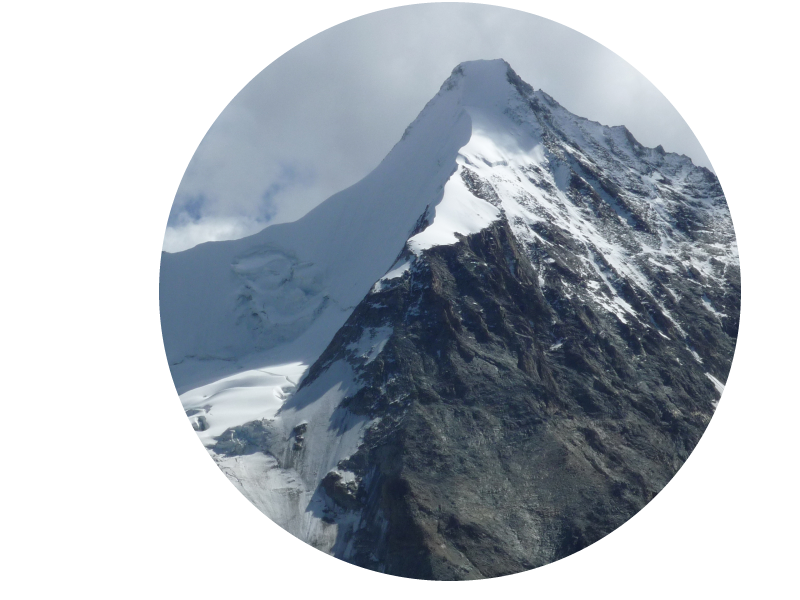


my host is Infomaniak
I just could not leave your web site prior to suggesting that I really loved the usual info a person provide for your visitors?
Is going to be again often to investigate cross-check new posts
Hello. fantastic job. I did not imagine this. This is a impressive story. Thanks!
Thanks for finally writing about >Géographie et Milieu Alpin | Objectif Montagne <Loved it!
My brother recommended I might like this blog. He was totally right.
This post truly made my day. You can not imagine
simply how much time I had spent for this info!
Thanks!
Hi there i am kavin, its my first time to commenting anywhere, when i read this piece of writing i thought i could
also make comment due to this good paragraph.
Wow, this article is nice, my younger sister is analyzing
such things, thus I am going to inform her.
Hi there to every body, it’s my first go to see of this website;
this web site includes remarkable and in fact good data in support of visitors.
I needed to thank you for this very good read!! I absolutely enjoyed every little bit of it.
I have you bookmarked to check out new things you post…
Saved as a favorite, I love your web site!
All my blogs and websites are hosted by Infomaniak, in Swizerland.
Excellent blog you have got here.. It’s hard to find high-quality writing like yours nowadays.
I truly appreciate people like you! Take care!!
I’m really inspired along with your writing talents as neatly as with the structure on your blog.
Is this a paid subject matter or did you modify it yourself?
Either way stay up the nice quality writing, it’s uncommon to see a nice blog like this one nowadays..
You made some good points there. I checked on the internet to learn more about the issue and found most people will go along
with your views on this website.
Hi to all, it’s truly a nice for me to pay a quick visit
this web page, it includes priceless Information.
Superb, what a web site it is! This webpage gives useful information to us, keep it up.
Hello There. I found your weblog the usage of
msn. This is a really smartly written article. I’ll be sure to bookmark it and return to
learn more of your helpful info. Thanks for the post.
I’ll certainly comeback.
Hi there I am so grateful I found your web site,
I really found you by accident, while I was browsing on Yahoo
for something else, Regardless I am here now and would
just like to say thanks for a marvelous post and a all round interesting blog (I
also love the theme/design), I don’t have time to look over it all at the moment but I have
saved it and also added in your RSS feeds, so when I have time I
will be back to read much more, Please do keep up the excellent
work.